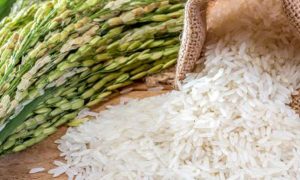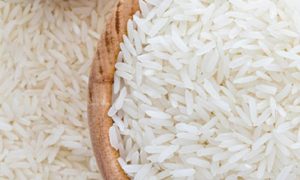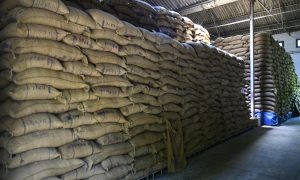Rice deficit drives push to multiply hardy seed

Kenya faces a significant deficit in rice production, with only about 11% of its consumption being locally produced, according to the Kenya Agricultural, Livestock and Research Organisation (Kalro). To address this shortfall, measures like contracting seed multipliers have been adopted. John Gitau, a farmer at Bura Irrigation Scheme, is involved in multiplying Komboka seed rice for Kalro. He follows meticulous practices including disease inspection, using fertilizers like Diammonium Phosphate (DAP), and controlling pests manually to ensure high-quality yields. Gitau expects substantial earnings from his 10-acre rice field through this initiativ
Kenya’s rice production deficit is a bane to the crop’s producers, scientists and consumers.
According to the Kenya Agricultural, Livestock and Research Organisation (Kalro), the country can only produce about 11 per cent of what is consumed.
One of the measures adopted to cut down the shortfall is contracting seed multipliers. At the Bura Irrigation Scheme, John Gitau has a 10-acre rice field in Area One, Block Four. “This is seed rice,” he says, pointing at the crop. “I’m contracted by Kalro to multiply the seed.”
The seed variety is Komboka. The crop is three months old. After one more month, harvesting will set in. But before then, it will be inspected to ensure it’s disease-free and unadulterated with other varieties and impurities. Thereafter, a combine harvester will gather it.
Gitau had been enlisted earlier for a similar engagement by a farmers’ sacco in Mwea. He says, “This is the first time I’m doing it in Bura.”
Kalro Mwea centre director Dr Ruth Musila says Gitau was contracted to produce certified seed generation one. He expects to reap about 20 bags per acre. He’ll earn Sh80 per kg. Each bag weighs 100kg. He foresees his gross earnings hitting Sh1.6 million.
While in Mwea, the seed multiplier was first exposed to Komboka in 2018. He was a lead farmer. He has other farms where he produces Komboka rice for consumption.
He does rotovation in preparing his land for planting. He’s divided his parcel of land into smaller portions for better water retention. He applies Diammonium Phosphate (DAP) fertiliser and some goat manure. He ensures the soil is soft to favour transplanting. He plants the crop in rows.
After 21 days, he applies his first top dressing. This is YaraVera Amidas (combines urea with sulphur in the sulphate form) fertiliser, which is granular and completely soluble. After about 35 days, urea follows. And lastly, 10 days later, ammonium sulphate.
Spraying to control pests is important. “I spray after every 14 days,” he says. Since dry areas tend to be cold in the morning, he applies fungicide. He does manual uprooting of the weeds because he doesn’t prefer herbicides. He engages labourers on a needs basis.
Bura is hot. Sun-drying the rice takes two days. The recommended moisture content is between 13-14 per cent. The seed is then transported to the Kalro Centre in Mwea, where a store that can hold more than 100 tonnes of seed rice is seeds.
Source Link : https://www.the-star.co.ke/news/big-read/2024-07-18-rice-deficit-drives-push-to-multiply-hardy-seed/















